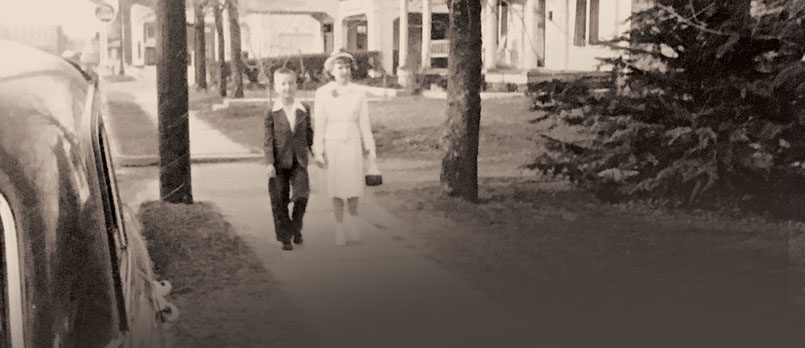02 Aug 2022 If I could save time in a bottle
By Vivian Lawson Hogue
We all have “remember when?” moments of our days in school, whether kindergarten or college. One of the most notable differences among the remembrances is the number of students in classes. My 1961 high school class had 120 graduates. Of those, 70 are still with us. Classes of the 1950s had even smaller subject-classes, creating a tighter-knit group. The population was modest, with so many residents recognized by face, voice, name, home, church, or physical appearance. Population 1950: 8,610. Population 1960: 9,791.
Friends like to relate their recollections of Old Conway as it truly was. The interesting thing about recollections is they can change. Buildings may be remodeled or razed and cause confusion in the “eyes” of our minds. I often pass new homes or empty lots and “see” what I call “ghost houses,” the homes that once stood proudly in place on never-before occupied land that was once a forest or prairie.

A recent resident of our city in the current era will likely not look at buildings the same as a long-timer or native resident. Newcomers may or may not have interest in our history or people. They may even want things to be like their previous cities. Others are interested and wish to belong. Here are a few comments to help them along!
Siblings Mike and Marilyn Morris, now Marilyn Jacks, grew up in a home among the businesses downtown. It was owned by their maternal grandparents and one of several in the downtown landscape. Mike says his grandfather was a conductor on the railroad and didn’t own a car, so he wanted to walk to work. Their house at 612 Front St. later became the site of the third police station. The first station was at the back of First National Bank and facing North Street, and the second was located in a small rock building on Chestnut Street. The newest location is at Prairie and Front streets.
Having worked alongside his dad in his downtown furniture businesses, Mike can relate where all businesses and homes were in his youth. He points out that the many small storefronts were only 25 feet wide but were quite deep. It is noticeable, although some have been expanded. A few homes that are now “ghost houses” belonged to the Vaughters, Joneses, Markhams, and Covingtons.
Marilyn recalls familiar, distinguishable sounds related to our cotton culture. She said, “The generator for the ‘light plant,’ or Conway Corporation, hummed all year, but autumn was the time to enjoy the sounds of the cotton gins and compress. To many, these sounds signified that the fall season had arrived.” In the spring, Mr. Herman Stermer, a ham radio operator and local radio station KCON personality, kept listeners informed of the sighting of the first purple martin.
Marilyn said, “There were several drugstores in town and all had a myriad of ice cream flavors. Fecher’s Ice Cream Parlor had the largest variety, though.” And only they had orange sherbet, Mike’s favorite treat.
Marilyn also remembers election nights on the county courthouse lawn. “People gathered to listen to election results over a loudspeaker. Soft drinks were sold as it was always very hot weather.” A curiosity she mentions is, “Beside a courthouse side entrance for many years was a tombstone leaning against the building. No information was available regarding its history.”
As many school students ride buses now, even within city limits, most of our town’s students walked or rode bikes to and from school. Mike and Marilyn walked quite a distance to their home in downtown Conway. Marilyn states, “The windows of the original Log Cabin Democrat on Oak Street were always open in warm weather. The linotype operators sat at the windows and you could hear them typing long before you got there.”
While in high school, my late brother, Noel, worked for the newspaper both as a carrier and a “go-fer” for workers. He spoke of the linotypists, saying one was a fellow named “Sug” (as in “sugar”) McMillan who drove to work every day from Wooster. Noel said, “I melted down all the lead into ‘pigs’ and delivered them every day to the linotype operators. ‘Pigs’ were 2-foot bars of lead resulting when previously-used lead was hung over or placed inside a melting pot so that the then-liquefied lead could be poured into forms and eventually into lines-of-type or letters. It was always very hot in the building and we all took salt tablets.” He always wondered how he missed getting lead poisoning. The newspaper was widely read and appreciated, read and appreciated, serving the purpose of a local newspaper by informing the community as well as nurturing.
If persons from different eras were asked to describe his or her Conway experience, each description of the town would be different from those before and after. They may now live on another continent, in a far off state or next door, but each will remember the same things about “their” Conway.
And I wonder what Conway founder, Col. Asa Peter Robinson, and the associated founding fathers would think as they navigated the roundabouts in their wagons, only to arrive somewhere they didn’t intend to go!
- My very own Mayberry - March 31, 2024
- The fine line between family and friends - March 10, 2024
- Seniors again - February 1, 2024











